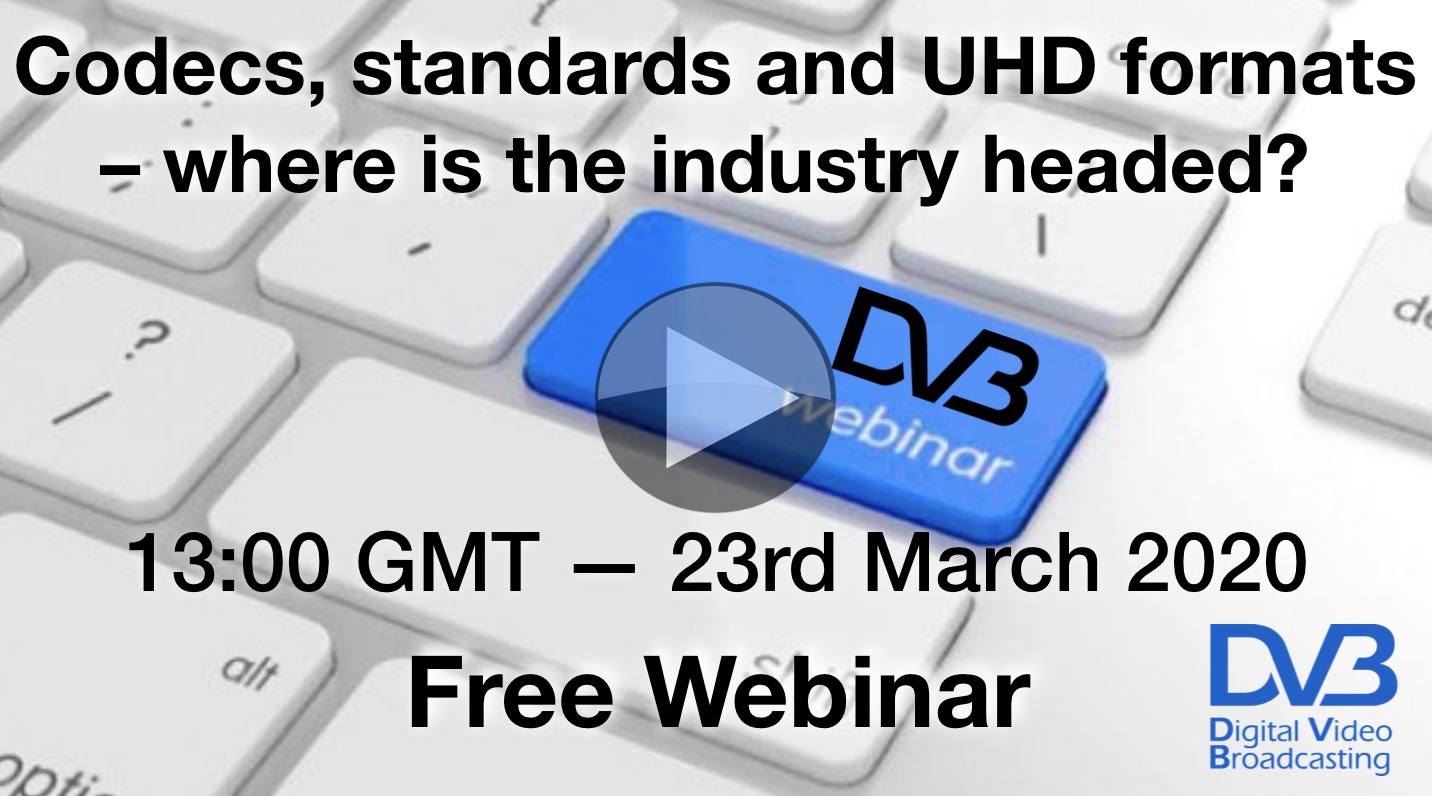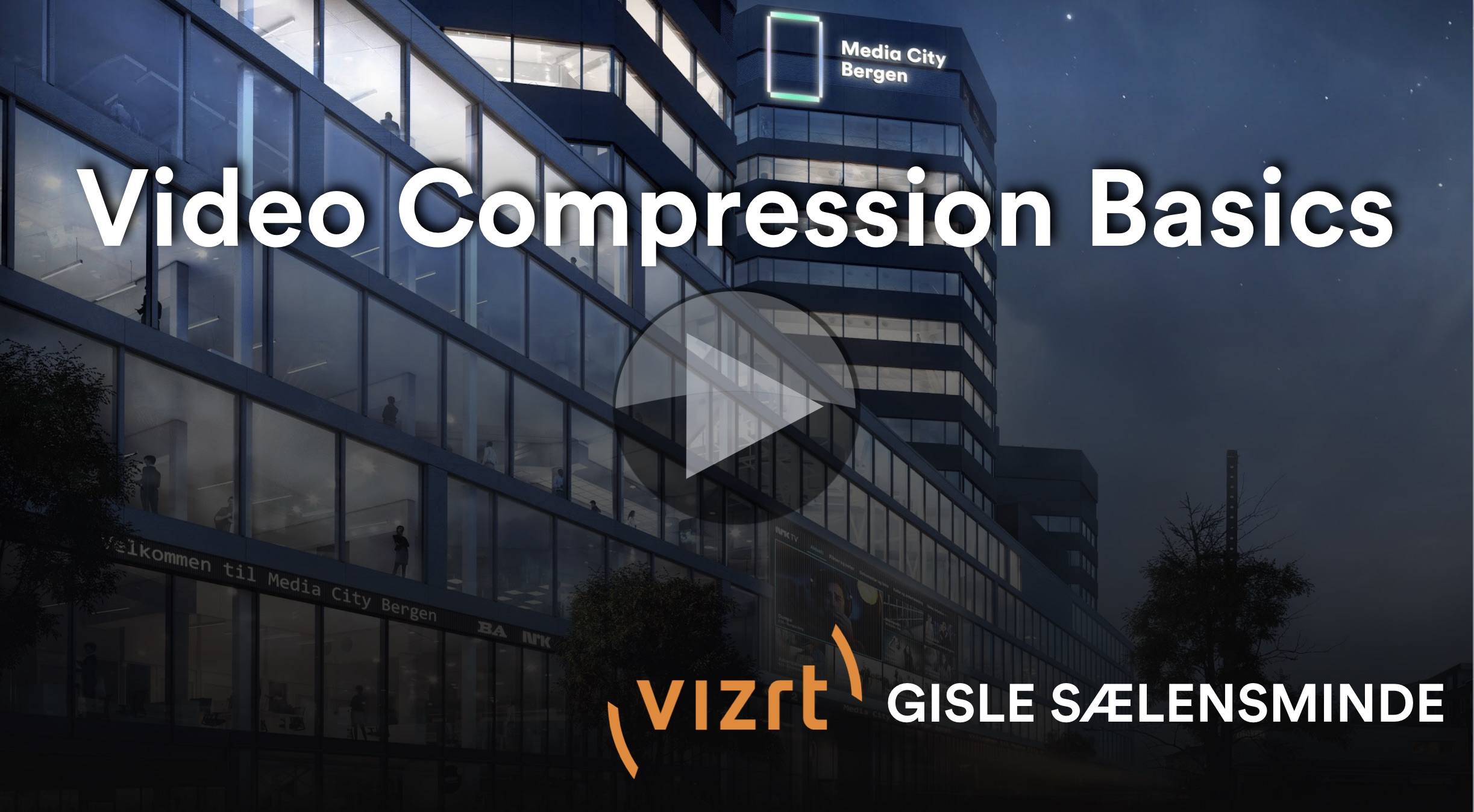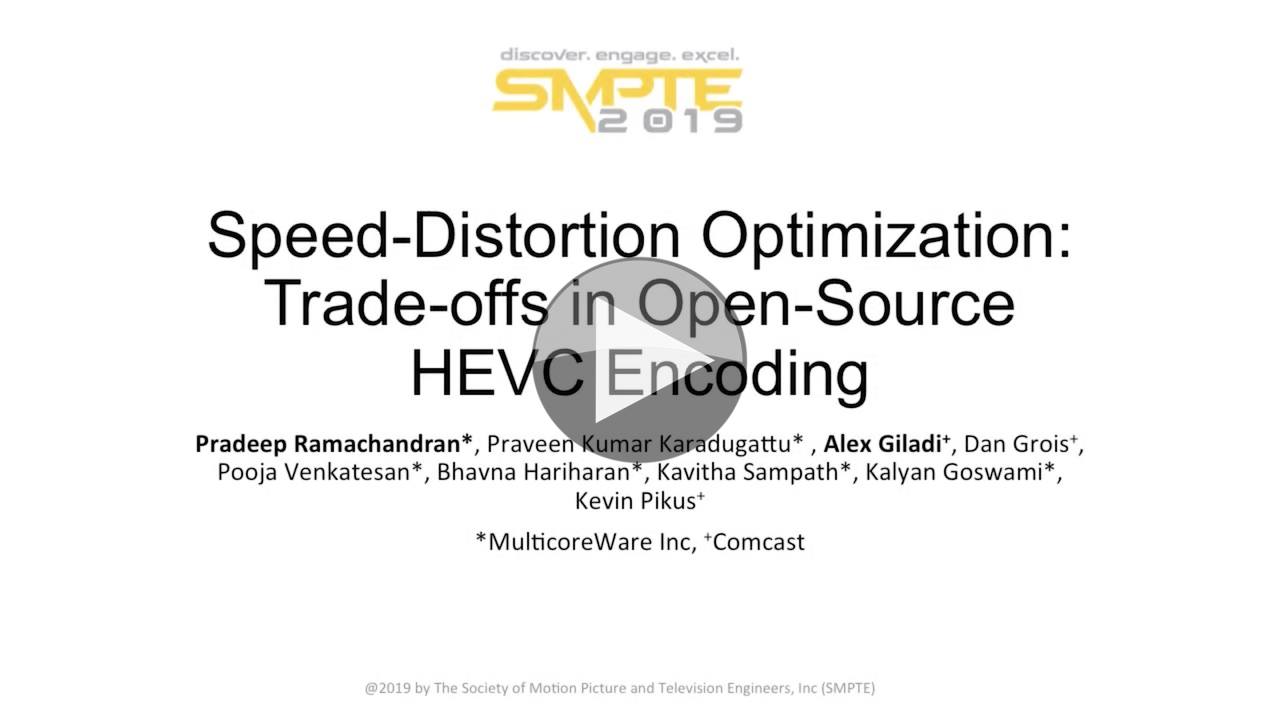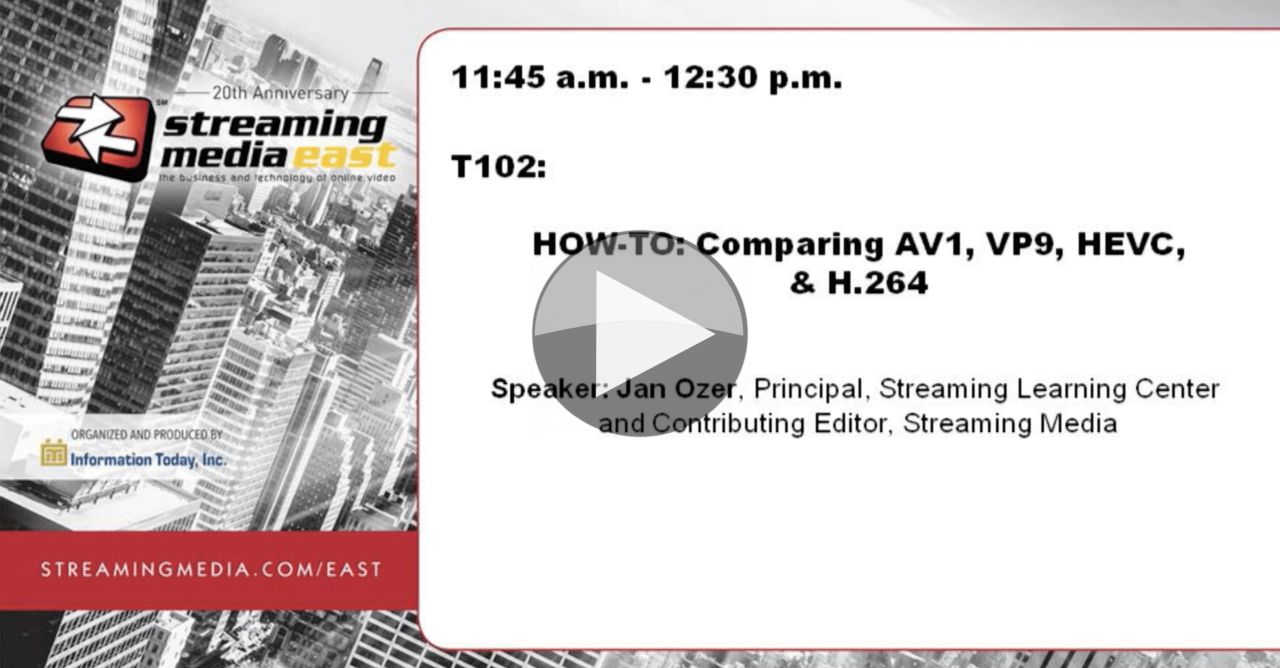Now Available On Demand
UHD transmissions have been available for many years now and form a growing, albeit slow-growing, percentage of channels available. The fact that major players such as Sky and BT Sports in the UK, NBCUniversal and the ailing DirecTV in the US, see fit to broadcast sports in UHD shows that the technology is trusted and mature. But given the prevalence of 4K in films from Netflix, Apple TV+ streaming is actually the largest delivery mechanism for 4K/UHD video into the home.
Following on from last week’s DVB webinar, now available on demand, this webinar from the DVB Project replaces what would have been part of the DVB World 2020 conference and looks at the work that’s gone into getting UHD to were it is now in terms of developing HEVC (also known as H.265), integrating it into broadcast standards plus getting manufacturer support. It then finishes by looking at the successor to HEVC – VVC (Versatile Video Codec)
The host, Ben Swchwarz from the Ultra HD Forum, first introduces Ralf Schaefer who explores the work that was done in order to make UHD for distribution a reality. He’ll do this by looking at the specifications and standards that were created in order to get us where we are today before looking ahead to see what may come next.
Yvonne Thomas from the UK’s Digital TV Group is next and will follow on from Ben by looking at codecs for video and audio. HEVC is seen as the go-to codec for UHD distribution. As the uncompressed bitrate for UHD is often 12Gbps, HEVC’s higher compression ratio compared to AVC and relatively wide adoption makes it a good choice for wide dissemination of a signal. But UHD is more than just video. With UHD and 4K services usually carrying sports or films, ‘next generation audio‘ is really important. Yvonne looks at the video and audio aspects of delivering HEVC and the devices that need to receive it.
Finally we look at VVC, also known as H.266, the successor to HEVC, also known as H.265. ATEME’s Sassan Pejhan gives us a look into why VVC was created, where it currently is within MPEG standardisation and what it aims to achieve in terms of compression. VVC has been covered previously on The Broadcast Knowledge in dedicated talks such as ‘VVC, EVC, LCEVC, WTF?’, ‘VVC Standard on the Final Stretch’, and AV1/VVC Update.
Watch now!
Speakers
 |
Ben Schwarz Communication Working Group Chair, Ultra HD Forum |
 |
Ralf Schaefer VP Standards R&I InterDigital Inc. |
 |
Yvonne Thomas Strategic Technologist DTG (Digital TV Group) |
 |
Sassan Pejhan VP Technology, ATEME |
Video: Video Compression Basics
Video compression is used everywhere we look. So often is it not practical to use uncompressed video, that everything in the consumer space video is delivered compressed so it pays to understand how this works, particularly if part of your job involves using video formats such as AVC, also known as H.264 or HEVC, AKA H.265.
Gisle Sælensminde from Vizrt takes us on this journey of creating compressed video. He starts by explaining why we need uncompressed video and then talks about containers such as MPEG-2 Transport Streams, mp4, MOV and others. He explains that the container’s job is partly to hold metadata such as the framerate, resolution and timestamps among a long list of other things.
Gisle takes some time to look at the past timeline of codecs in order to understand where we’re going from what went before. As many use the same principles, Gisle looks at the different type of frames inside most compressed formats – I, P and B frames which are used in set patterns known as GOPs – Group(s) of Pictures. A GOP defines how long is between I frames. In the talk we learn that I frames are required for a decoder to be able to tune in part way through a feed and still start seeing some pictures. This is because it’s the I frame which holds a whole picture rather than the other types o frame which don’t.
Colours are important, so Gisle looks at the way that colours are represented. Many people know about defining colours by looking at the values of Red, Green and Blue, but fewer about YUV. This is all covered in the talk so we know about conversion between the two types.
Almost synonymous with codecs such as HEVC and AVC are Macroblocks. This is the name given to the parts of the raster which have been spit up into squares, each of which will be analysed independently. We’ll look at who these macro blocks are used, but Gisle also spends some time looking to the future as both HEVC, VP9 and now AV1 use variable-size macro block analysis.
A process which happens throughout broadcast is chroma subsampling. This topic, whereby we keep more of the luminance channel than colours, is explored ahead of looking at DCTs – Discrete Cosine Transforms – which are foundational to most video codecs. We see that by analysing these macro blocks with DCTs. we can express the image in a different way and even cut down on some of the detail we get from DCTs in order to reduce the bitrate.
Before some very useful demos looking at the result of varying quantisation across a picture, the difference signal between the source and encoded picture plus deblocking technology to hide some of the artefacts which can arise from DCT-based codecs when they are pushed for bandwidth.
Gisle finishes this talk at Media City Bergen by taking a number of questions from the floor.
Watch now!
Speaker
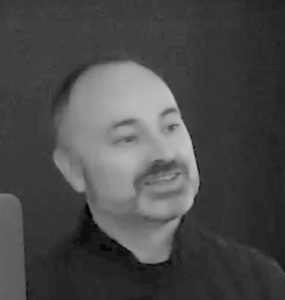 |
Gisle Sælensminde Senior Software Engineer, Vizrt |
Video: Speed-Distortion Optimization: Tradeoffs in Open Source HEVC Encoding
HEVC, also known as h.265, has been with us for 7 years and whilst its use continues to grow, its penetration remains low in streaming and broadcast transmissions. One reason for this is the increase in compute power it requires. With 4-rung ABR ladder for streaming being so common, a two-fold increase in complexity means finding 8 times as much compute power in your encoder.
This talk, led by MulticoreWare and Comcast, discusses the x.265 codec and the abilities of the presets. Pradeep Ramachandran uses a diagram of the x.265 encode system to expose some of the ways in which x.264 works.
Pradeep then gives an overview of the key tools of HEVC ahead of explaining those they tested against using UHD HDR content. Alex Giladi then takes the stage detailing their use of Dynamically Controlled RDO and how they were able to determine the best combination of modes to create the best encode.
Watch now!
Speakers
 |
Pradeep Ramachandran Principal Engineer in Office of CTO, MulticoreWare |
 |
Alex Giladi Distinguished Engineer, Comcast |
Video: 2019 What did I miss? Comparing AV1, VP9, HEVC, & H.264
The ever popular, always analytical Jan Ozers spends time here evaluating the quality of these codecs against the ever-present h.264. As the team here at The Broadcast Knowledge takes a short break, we’re recapping the most popular posts of the year. Interestingly, this post is from over a year ago but is still seeing top-10 traffic. This is no surprise since, as I said in my interview with SMPTE on the subject of codecs, everyone touches codecs in some way even if only at home. So it’s no surprise there is such an interest.
Jan takes a careful approach to explaining the penetration adn abilities of h.264 in order to see at what point we can break even and start to ebenefit from using alternative codecs. He then takes each codec in turn looking at it its pros and cons to paint a picture of the options available for those willing and able to go beyond h.264.
Read the original article or Watch now!
Speakers
 |
Jan Ozer Industry Analyst Streaming Learning Center |

